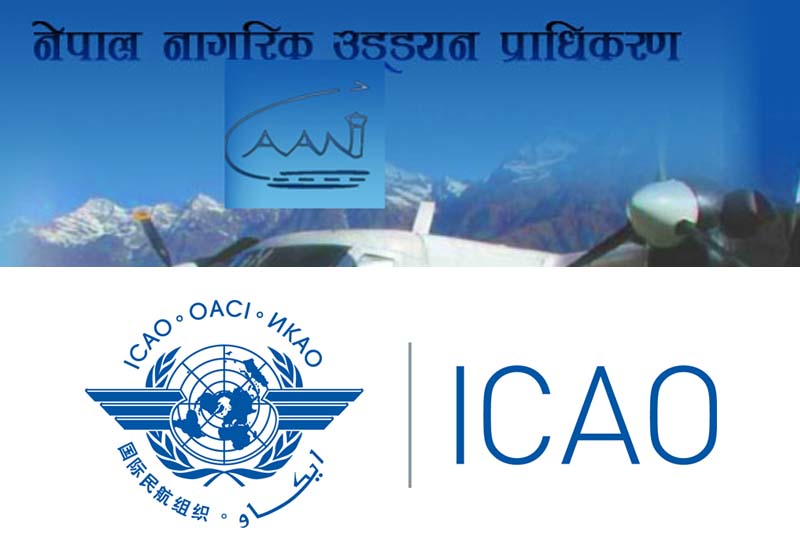'Functionless, merrymaking' jumbo junket set for Canada tour
KATHMANDU: As an 11-member delegation is all set to fly for Canada on Sunday to attend a two-week triennial General Assembly of the International Civil Aviation Organisation in Montreal, the jumbo team, despite spending millions of taxpayers' money, does not have any original paper to share its unique trysts with aviation safety before the global meet.
Merrymaking junket
According to a member of the delegation, it would be just a merrymaking junket to Montreal as usual due to lack of its original papers to present before the global forum though Nepal enjoys its superior experiences in investigation involving aircraft operating in unfriendly terrain, capricious weather patterns, its efforts to get rid of the ignominious ICAO’s significant safety concerns as well as an operation ban by the European Union.
The list prepared by Civil Aviation Authority of Nepal shows that Minister For Culture, Tourism And Civil Aviation Jeevan Bahadur Shahi is leading the jumbo delegation, which includes three joint secretaries – Suresh Acharya and Buddhi Sagar Lamichhane (MoCTCA) and Buddhi Bahadur Khadka (Prime Minister’s office), CAAN’s Director General Sanjiv Gautam, Deputy DG Rajan Pokhrel, Board Director Iswari Paudel, Tribhuvan International Airport General Manager Devanand Upadhyay and Nepal Airlines Corporation Managing Director Sugat Ratna Kansakar.
Upadhyay and Paudel will be flying to Canada along with their spouses.
Missed chance
“In fact, Nepal has blown the chance of sharing its experiences in investigating the Turkish Airline crash of 2015 as the Ministry experts (two joint secretaries, who head aviation divisions) are not comfortable with the possibility of difficult questions likely to be raised from the floor on their original work,” a CAAN official, who is also going to be a part of the junket, revealed.
In the updated ICAO Safety Audit Report 2016, the status of Nepal in effective implementation of ICAO protocols stands at a pathetic 20 per cent as compared to the global average of 54 per cent as far as air accident investigation is concerned.
According to the official, China has beaten Nepal by presenting a paper on safe operation at ‘plateau airports’ that are akin to Nepali remote airports, but allow larger aircraft to operate with a superior safety record. “The paper does not elaborate the geographical realities and vagaries of nature like Nepal does.”
Wrong time?
Stakeholders also flayed the decision to send the jumbo team consisting CAAN’s Director General, TIA’s GM and both aviation safety division chiefs at the Ministry to Canada while the TIA has been witnessing potholes and cracks on its sole runway affecting flight operations daily.
Having the instances of gross negligence in its provision of aeronautical services as well as the performance of safety oversight of air traffic control within the Nepali airspace, CAAN would certainly face criticism at the ICAO forum, a Ministry official said.
Abuses of authority?
Though the civil aviation regulations authorise the Director General to issue directives and circulars only on matters pertaining to flight operations; in practice, historically, the Director General continues to exercise ‘illegal’ authority, in every conceivable area.
“This is especially the case in safety-sensitive matters including aerodrome pavement surface conditions and now, worryingly, air traffic control.”
A case in point
Commercial aircraft navigate in Nepali airspace relying mostly on ground-based radio navigational aids while such navigational aids have to be maintained at the highest standards, which ICAO requires to be certificated after a flight inspection by specially equipped aircraft at periodic intervals for ensuring safety of flights. In the absence of timely flight inspections, the legal status of proper maintenance of the critical navigation infrastructure clearly stands undermined, according to ICAO.
“This is indeed the case presently in Nepal, where the equipment have been operating indefinitely based on mere paper decisions and not technical assessment involving flight inspection, while the regulations place the onus of equipment maintenance on airport managers, who unfortunately are busy with other lucrative enterprises,” a senior aeronautical engineer shared.
Interestingly, in a similar case in 2014, when Iran was unable to meet its timely flight inspection obligations by a mere two months, it had resorted to a safety assessment approach for operating the navigation facilities which it then duly presented at the ICAO regional conference. Besides, for legal purposes, just in case, it also promulgated an aeronautical notification to airlines, called NOTAM, stating that the concerned navigational facilities’ “flight check had expired."
“Why CAAN is willing to take unwarranted risks likely to arrive due to inaction by concerned units is beyond understanding,” a senior CAAN director shared with THT Online, “Perhaps, over time, the management has grown emboldened by relatively safe experiences while operating with substandard facilities - whether potholed runway pavement or decrepit aeronautical communication facilities.”






